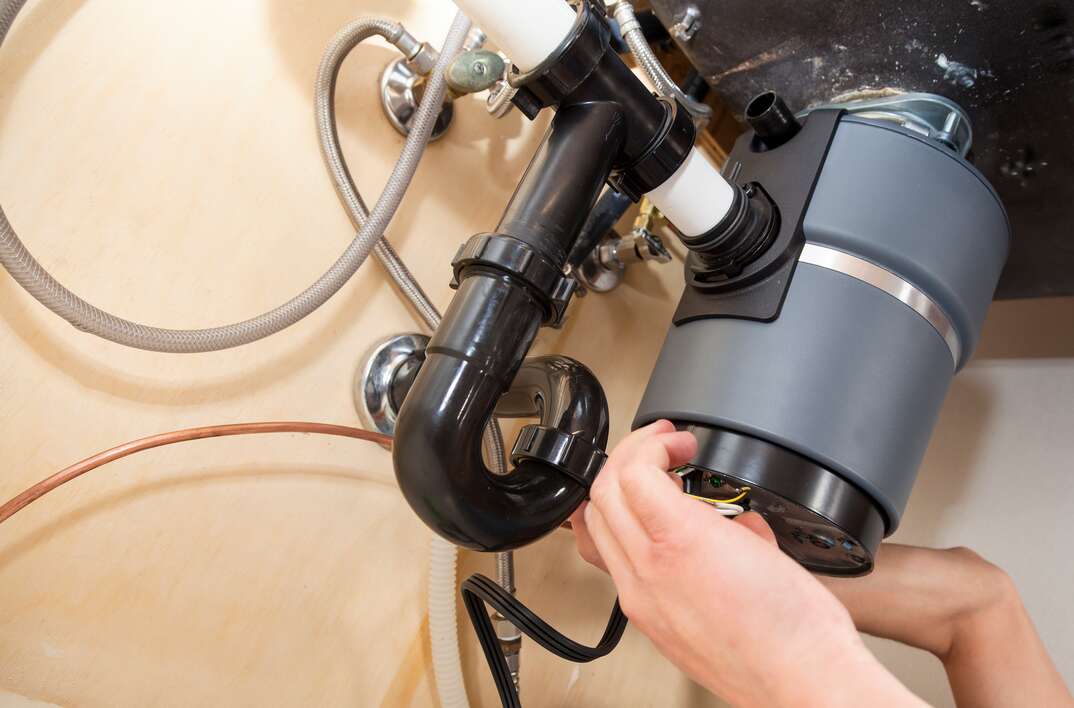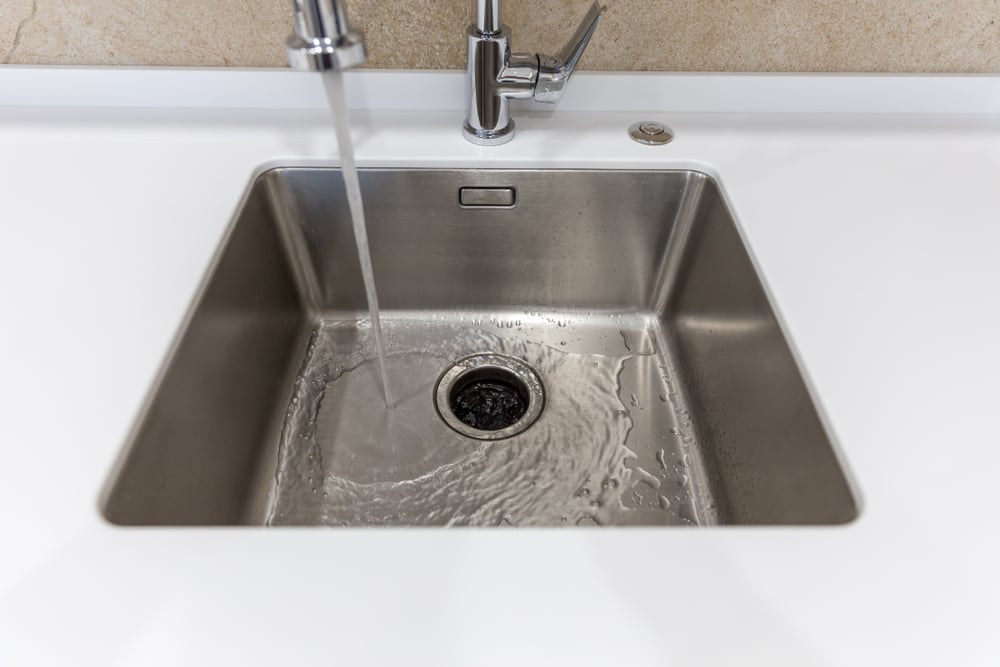What are your beliefs about Garbage Disposal Leaking From Bottom?

Waste disposal unit are crucial cooking area devices that assist in disposing of food waste successfully. Nevertheless, a dripping waste disposal unit can be a discouraging and messy problem to take care of. Luckily, numerous leakages can be dealt with quickly with a couple of straightforward steps. In this article, we will certainly discuss how to take care of a leaking waste disposal unit efficiently.
Introduction
Waste disposal unit are installed under kitchen area sinks and are made to shred food waste into smaller sized items, allowing it to go through the pipes system easily. While these devices are typically trusted, leaks can occur gradually as a result of damage, loosened links, or damages to the device.
Step-by-Step Guide to Dealing With a Leaking Garbage Disposal
Shut off the Power
Before attempting any type of repair services, ensure that the power to the waste disposal unit device is switched off to avoid the threat of electrical shock.
Find the Leak
Recognize the specific place of the leak and figure out the cause
Tighten Links
Utilize a wrench to tighten up any loosened connections between the disposal system and the pipes system.
Replace Seals or Gaskets
If the leakage results from worn seals or gaskets, eliminate the old parts and change them with new ones.
Patching Fractures or Openings
For cracks or holes in the disposal system, use epoxy or an ideal patching product to secure the broken location.
Identifying the Source of the Leak
Before attempting to repair a leaking garbage disposal, it is important to determine the source of the leak. This can normally be done via aesthetic assessment or by performing basic examinations.
Visual Assessment
Examine the garbage disposal system thoroughly for any indicators of water leak. Pay very close attention to areas around seals, gaskets, and link points.
Testing for Leakages
One method to test for leaks is by running water via the disposal system and looking for any type of noticeable indications of leakage.
Common Reasons For Leaks in Trash Disposals
Worn Seals and Gaskets
Seals and gaskets play an essential function in avoiding water from leaking out of the waste disposal unit. Gradually, these components can wear away, resulting in leakages around the disposal device.
Loose Connections
The connections between the garbage disposal and the pipes system can come to be loosened over time, triggering water to leakage out throughout procedure.
Splits or Openings in the Disposal Unit
Physical damage to the garbage disposal, such as fractures or openings in the real estate, can also result in leakages.
Devices and Materials Needed for Taking Care Of a Leaking Garbage Disposal
Before beginning the repair process, gather the required tools and materials, consisting of a screwdriver, flexible wrench, plumber's putty, substitute seals or gaskets, and epoxy or patching product for repairing cracks or holes.
Testing the Waste Disposal Unit After Fixing
As soon as the repair is total, check the waste disposal unit by running water through it to make sure that the leak has actually been dealt with.
Preventive Upkeep Tips to Avoid Future Leakages
To prevent future leakages, it is necessary to execute routine upkeep on your garbage disposal. This includes maintaining it clean, avoiding putting non-food things or hard items down the disposal, and occasionally looking for leaks or other problems.
Verdict
In conclusion, dealing with a leaking garbage disposal is a fairly simple procedure that can be finished with standard tools and materials. By complying with the actions laid out in this write-up and exercising preventative upkeep, you can maintain your waste disposal unit in good working problem and stay clear of pricey fixings in the future.
What to Do About a Leaking Garbage Disposal
A leaking garbage disposal often goes unnoticed until you confront a sopping cabinet, a foul-smelling puddle, or an audible drip-drip-drip from the unit. The fix can be frustrating, too, because the leak can stem from a number of components in the system. Fortunately, with a little sleuthing, you can zero in on the leak and—depending on the exact location—stop the icky oozing and repair the component that caused it. Worst case scenario, if it turns out that the garbage disposal must be replaced, installing a new one is a reasonable do-it-yourself task for those with basic plumbing skills. Read on to keep the cash you’d otherwise hand over to a pro.
Prepare to find the leak
Prior to testing the garbage disposal for leaks, unplug it at the wall outlet and turn off the power from the breaker box to prevent electrical shock. Then insert a watertight sink stopper into your sink drain and wipe the unit dry with a clean cloth. In any handy container, mix a few drops of food coloring into a few cups of water, and pour the dyed water onto the sink stopper to help you locate the leak.
Investigate the source
the top, where the disposal meets the sink drain the side, where the dishwasher hose or main drain pipe connects to the disposal or the bottom of the unit Inspect each of these locations while gliding a light-colored rag over the unit; the dyed water will readily show on the rag and reveal the location of the leak. If a leak isn’t immediately apparent, remove the sink stopper and pour a few more cups of dyed water down the sink drain, then check for leaks again. Leaks near the top of the unit are more likely to show themselves while the sink is plugged, while side and bottom leaks are more noticeable while the sink is unplugged.
The metal sink flange that sits directly inside the sink drain is typically sealed around the top with plumber’s putty (a clay-like sealant) and then secured from under the sink with bolts. If the plumber’s putty deteriorates, or the bolts loosen, the flange can no longer form a watertight seal between the sink drain and the disposal—which could cause a leak at the top of the unit.
To reseal the leaky flange, you must first detach the garbage disposal. Start by loosening the screws securing the main drain pipe to the disposal, then loosen the screws in the metal clamp securing the dishwasher hose to the disposal and detach the drain pipe and dishwasher hose from the disposal. Loosen the screws in the mounting ring that connects the disposal to the metal mounting assembly beneath the sink, then pull down the disposal and carefully set it on a clean, dry surface. Loosen the bolts in the mounting assembly with a wrench, then pull down the mounting assembly and set it near the disposal.

I found that entry about Why Is My Garbage Disposal Leaking From the Bottom? when doing a search on the internet. Liked our post? Please share it. Let another person check it out. We treasure reading our article about Tips on Fixing a Leaking Garbage Disposal.
Apply Now